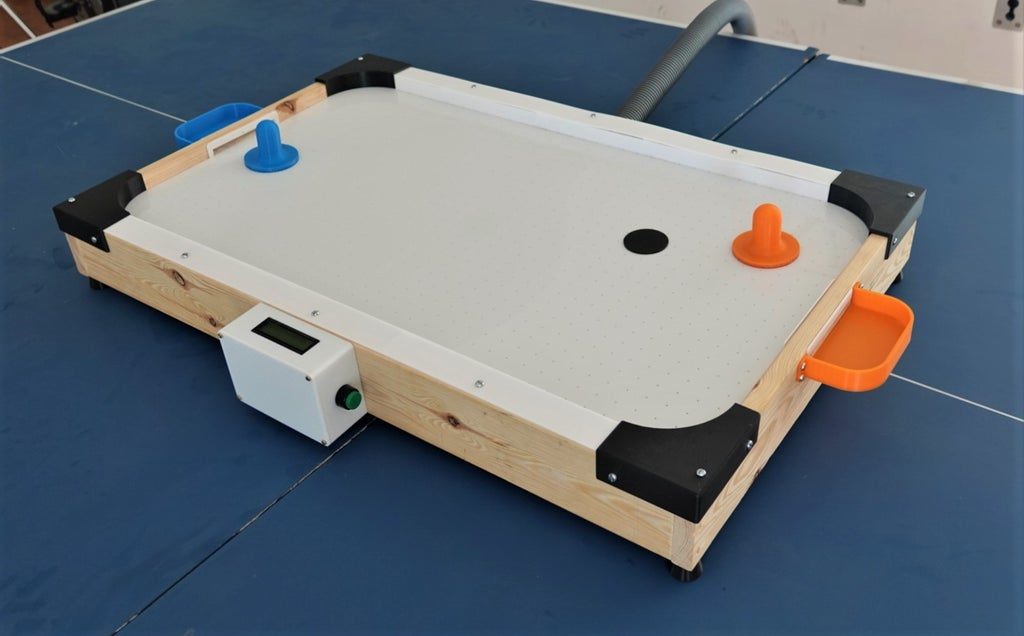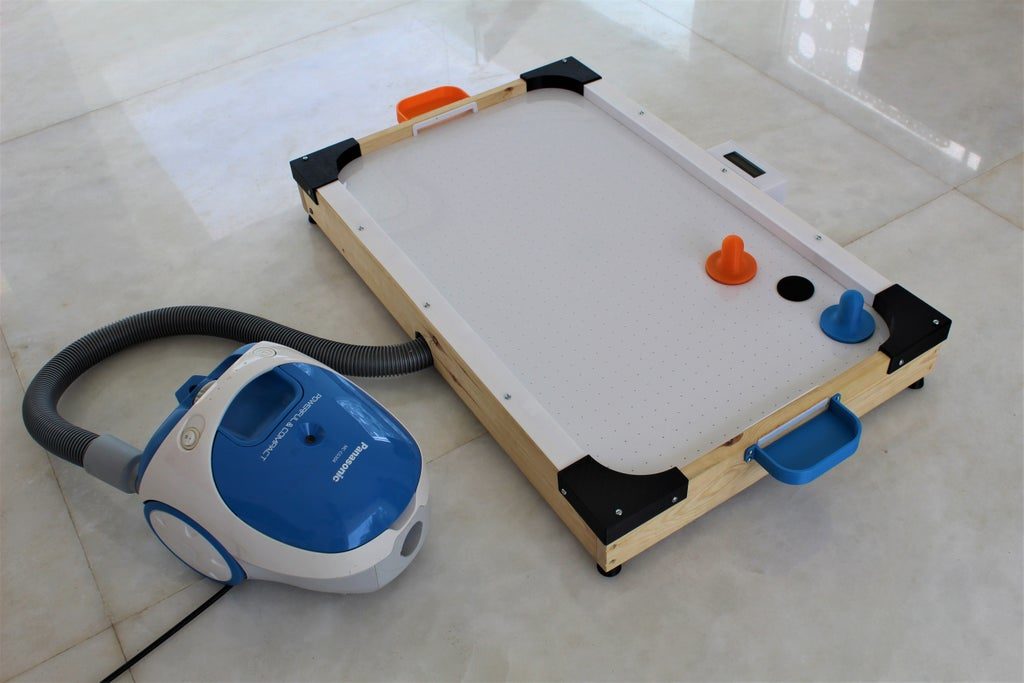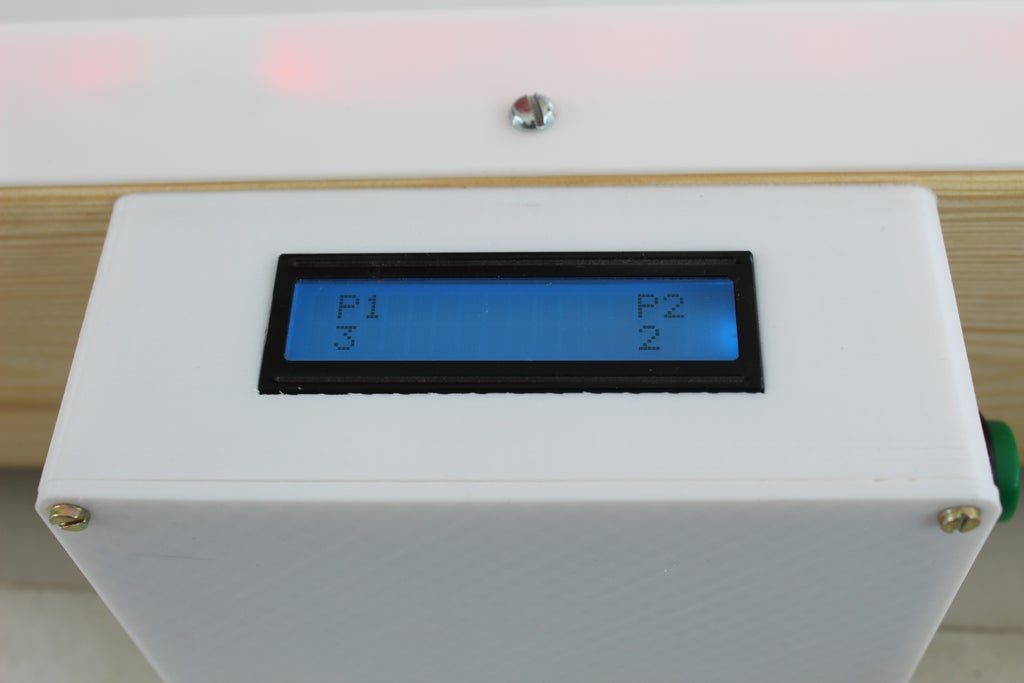29

Go to any arcade and the air hockey table will probably be one of the most popular games they have. Everyone loves air hockey, but a lot of people don’t want to go to an arcade just to play. If you fall into that category, then you can follow LloydB’s Instructables guide to make your own scorekeeping air hockey table.
The key to air hockey is right there in the name: air. All of those little holes in the table’s surface allow air flow. That creates an air cushion for the puck and paddles to float on, reducing friction and enabling knuckle-shattering gameplay. For that to work, the table needs something pushing at least as much air as escapes through the holes. This table isn’t very big, so it doesn’t need a high volume of air. Three 12V PC fans are enough. They push air into a chamber beneath the hole-filled top board. Power for the fans comes from a battery holder with 8 AA batteries.
Those batteries also power the Arduino UNO Rev3 that handles the scorekeeping, which is the other important part of air hockey. Each goal chute has a laser break-beam sensor to detect when the puck comes shooting in. The Arduino then updates the scores shown on a 16×2 LCD screen. The Arduino will also emit a tone through a buzzer. That increases in pitch with each point, so players get audible cues as the game progresses.
The post This small scorekeeping air hockey game brings the arcade classic to your tabletop appeared first on Arduino Blog.





